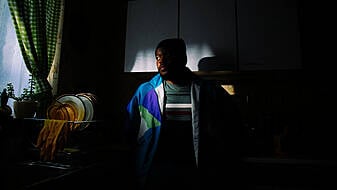Bullet cases found at the Regency Hotel murder scene were fired by three AK-47 assault rifles which were recovered during a Garda operation a month after the fatal shooting of Kinahan Cartel member David Byrne, the Special Criminal Court was told today.
The trial heard that a copper jacketed bullet passed through the hotel reception, where the body of Mr Byrne was seen with "its face blown off".
Detective Garda David O'Leary was giving evidence at the trial of Gerard 'The Monk' Hutch (59), last of The Paddocks, Clontarf, Dublin 3, who denies the murder of Mr Byrne (33) during a boxing weigh-in at the Regency Hotel on February 5th, 2016.
Giving evidence on Monday, Det Gda O'Leary, who is attached to the ballistics section of An Garda Siochana told Sean Gillane SC, prosecuting, that there was a crime scene tent erected in the reception area of the Regency Hotel on February 5th. He noted the position of the body of a deceased male lying at the front of the reception counter desk.
The detective said he noted a number of 7.62 calibre discharged cartridge cases on the floor of the hotel lobby and outside the main door. There was a discharged cartridge case behind the reception area and another on the access ramp outside of the hotel. Two strike marks were noted on the base of the reception desk on the public side, he added. A copper jacketed bullet had passed through the reception and was recovered in the filing cabinet. Another discharged bullet was lodged in the reception counter.
Det Gda O'Leary said he also examined the function room where the weigh-in was hosted and found several discharged cartridge cases. There were "strike marks" in the vicinity of a round table next to the stage, he said.
On March 10, the witness said he received a bag containing three assault rifles.
Car searched
Last week, Inspector Padraig Boyce gave evidence that he participated in "an intervention" at Tuiterath, Balrath, Slane, County Meath on March 9th, 2016 at 7.05pm. Shane Rowan, he said, from Forest Park, Killygordan, in County Donegal was driving a grey 09 Donegal registered Vauxhall Insignia car and the vehicle was stopped at the side of the road.
The vehicle was searched and three assault rifles modelled on original AK-47's and ammunition were found in the boot of the car. Rowan was arrested for membership of the IRA and possession of the assault rifles and ammunition.
In July 2016, Rowan was jailed for seven and a half years for possession of assault rifles and ammunition. He was also sentenced to a concurrent sentence of four years in prison for IRA membership, backdated to March 9 2016.
Det Gda O'Leary said the first assault rifle, which was handed to him in the witness box today, was a Chinese variant of the Kalashnikov and was in good working condition. He said it had not been cleaned since it was last discharged, it weighed 3.5kg and its barrel length was 16.5 inches. It was capable of semi automatic and fully automatic fire.
The Chinese assault rifle, he said, was designed to hold 7.62 by 39mm calibre ammunition, which was similar to the ammunition discovered at the scene of the Regency Hotel.
The second assault rifle, also presented in court to the detective, was a Romanian variant of the Kalashnikov and longer than the previous weapon. It had also not been cleaned since it was last discharged. "It was again designed to discharge 7.62 by 39mm ammunition, similar to the ammunition that was successfully discharged at the hotel," he said.
The third assault rifle was a Yugoslavian made Zastava M70 and had been manufactured in the former Yugoslavia. Again, it was designed to discharge 7.62 ammunition, similar to that found at the Regency hotel, said the witness.
Ammunition magazines
The detective was also given three ammunition magazines by the exhibits officer and he told the non-jury court that these were suitable for use in the three firearms. The magazines were capable of holding 30 rounds of 7.62 calibre ammunition, he said.
Det Gda O'Leary testified that he also examined seven cartridge cases received from the Regency Hotel, which had been manufactured in the former Yugoslavia. He said he was satisfied that the seven items had been discharged from the Romanian weapon.
The witness said he was also satisfied that four cartridge cases, two found in the function room and two located in the lobby, had been discharged from the Yugoslavian firearm.
He also said he was satisfied that a single cartridge case had been discharged from the Chinese type assault weapon.
Under cross-examination, Det Gda O'Leary told defence counsel Brendan Grehan SC, for Mr Hutch, that the Kalashnikov was an automatic rifle and had been invented in Russia in 1947.
Asked by counsel how many of these types of weapons are in the world, the witness said he estimated that they run into "tens of millions".
Det Gda O'Leary said each of the magazines can hold up to 30 rounds of ammunition and that they were all interchangeable.
The three rifles were all mechanically very similar and the detective said that the only difference was that one of them had the stock sawn off.
When asked about the age of the firearms, the witness said that the Romanian variant had a 1989 stamp adjacent to its serial number. Apart from that there was no way of dating the firearms, he added.
"In an Irish context, are these weapons you have come across?" asked Mr Grehan. "Yes, the Yugoslav weapon is quite prolific as a remnant of the Balkan war," replied the detective.
Det Gda O'Leary said whilst he was able to match some of the cartridges recovered from the hotel to some of the weapons, the markings on the bullets recovered in the silver Ford transit van at Charlemont estate had all been obliterated so they were no longer suitable for comparison.
Burnt-out van
Last week, Detective Garda Seamus O'Donnell, said he went to Charlemont estate and examined a "very badly burnt" silver Ford transit van, where he found "several discharged live and cooked-off calibre cartridge cases" as well as a number of bullets located on the ground. The "cooked off" cases had exploded as a result of the fire.
In summary, Det Gda O'Leary told Mr Grehan that whilst one of the weapons had been externally "cut off at the stock" it still would have been capable of being fired.
It is the prosecution's case that a silver Ford transit van containing six people left the Regency Hotel after the shooting and drove towards Charlemont Estate, where the vehicle was abandoned and burnt out. The State say the six included a man wearing a blonde wig and dressed as a woman, dissident republican gunman Kevin Murray who was wearing a flat cap, a driver and three persons dressed in tactical garda clothing. The raiders then made good their escape by using a number of parked vehicles at St Vincent's GAA club.
Mr Hutch's two co-accused - Paul Murphy (59), of Cherry Avenue, Swords, Co Dublin and Jason Bonney (50), of Drumnigh Wood, Portmarnock, Dublin 13 have pleaded not guilty to participating in or contributing to the murder of David Byrne by providing access to motor vehicles on February 5th, 2016.

Mr Byrne, from Crumlin, was shot dead at the hotel in Whitehall, Dublin 9 after five men, three disguised as armed gardaí in tactical clothing and carrying AK-47 assault rifles, stormed the building during the attack, which was hosting a boxing weigh-in at the time. The victim was shot by two of the tactical assailants and further rounds were delivered to his head and body.
Mr Byrne died after suffering catastrophic injuries from six gunshots fired from a high-velocity weapon to the head, face, stomach, hand and legs.
In his opening speech, counsel for the prosecution said the court will hear that Mr Hutch's former co-accused and now State's witness Jonathan Dowdall said Mr Hutch had said that he [Gerry Hutch] had been one of the team that shot Mr Byrne at the Regency.
The trial continues this afternoon before Ms Justice Tara Burns, presiding, sitting with Judge Sarah Berkeley and Judge Grainne Malone.







